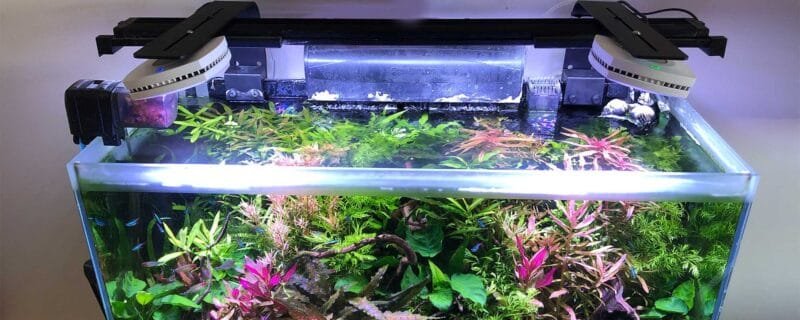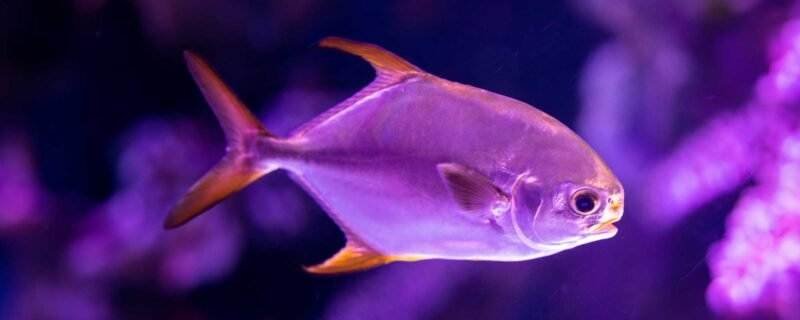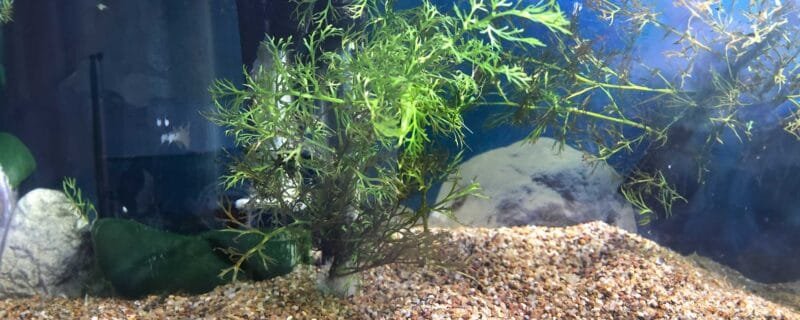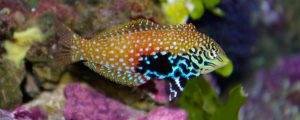Many aquarium enthusiasts underestimate the role of proper lighting in maintaining a healthy environment for your fish and plants. The right lighting not only enhances the aesthetics of your aquarium but also supports the crucial processes of photosynthesis for your aquatic plants, ensuring they thrive alongside your fish. Inadequate lighting can lead to algae overgrowth, poor plant health, and stressed fish, impacting the overall balance of your aquatic ecosystem. Understanding and implementing effective lighting strategies is key to a vibrant and harmonious aquarium.
Key Takeaways:
- Proper lighting promotes photosynthesis in aquatic plants, supporting their growth and health.
- Different fish species require varying light intensities, affecting their behavior and well-being.
- Appropriate lighting helps to enhance the visual appeal of the aquarium, showcasing colors and features of both fish and plants.
The Role of Lighting in Aquatic Ecosystems
Lighting significantly influences the overall health of your aquarium’s ecosystem. A balance of natural and artificial light not only supports plant growth but also creates a thriving environment for your fish. You must understand how light levels affect both flora and fauna to cultivate a vibrant aquatic habitat. Different species require varying intensities and durations of light, making it imperative for you to tailor your lighting strategy accordingly.
Photosynthesis and Plant Growth
Proper lighting is imperative for photosynthesis, the process by which aquatic plants convert light into energy. In your aquarium, the right spectrum of light stimulates growth and promotes the health of plants like Anubias, Java Fern, or Amazon Swords. A light intensity of about 2-3 watts per gallon is typically effective, but you’ll want to monitor your plants’ response to ensure they are thriving.
Fish Behavior and Health
Lighting impacts fish behavior and overall health significantly. Your fish rely on light to regulate their activity levels, with most species showing increased activity during the day and becoming more passive at night. Insufficient lighting can lead to stress in fish, resulting in poor health and potential disease outbreaks. A consistent light schedule mimics natural conditions, allowing your fish to exhibit natural behaviors.
Moreover, the effects of light extend beyond mere visibility. For example, species like bettas thrive in well-lit environments that allow them to display their vibrant colors and interact with their surroundings. On the other hand, too much light can lead to aggression or territorial behavior among certain species. By understanding your fish’s specific light needs and patterns, you can create a stable environment that reduces stress and promotes well-being. Regular observation during lighting changes can reveal insights into how your fish respond, enabling you to fine-tune lighting conditions for optimal health and activity levels.
Types of Aquarium Lighting
Selecting the right type of lighting is necessary for both fish and plants in your aquarium. Different lighting options provide various benefits and can impact the health of your aquatic life. Understanding these types can help you create a thriving ecosystem. Here’s a breakdown of lighting types:
- LED
- Fluorescent
- Incandescent
- Metal Halide
- High-Output Fluorescent
Assume that each type of lighting will cater to specific requirements of your fish and plants.
| Type of Lighting | Characteristics |
|---|---|
| LED | Energy-efficient and long-lasting |
| Fluorescent | Bright and diverse spectrums |
| Incandescent | Inexpensive but less efficient |
| Metal Halide | High light output, good for large tanks |
| High-Output Fluorescent | Ideal for plants with high light needs |
LED Lighting
LED lighting is becoming increasingly popular among aquarium enthusiasts. These lights are energy-efficient, produce minimal heat, and have a long lifespan. You can choose from various colors and intensities to suit your aquarium’s specific needs. Additionally, many LED systems offer programmable options to simulate natural day-night cycles, leading to healthier fish and plants.
Fluorescent and Incandescent Options
Fluorescent lighting is widely used in aquariums due to its bright output and efficiency. These lights come in a variety of colors, which can be beneficial for plant growth. In contrast, incandescent lights produce a warm glow but are less energy-efficient and generate more heat, which can negatively impact your tank’s temperature. For aquariums with demanding plant species, fluorescent options are generally the better choice.
In detail, fluorescent lights can be classified into standard and high-output varieties, with the latter being better suited for planted tanks requiring intense light. Meanwhile, the use of incandescent lighting is often discouraged in modern aquariums due to its shorter lifespan and limited spectrum. The heat generated from incandescent bulbs can also lead to temperature fluctuations, stressing your aquatic life. By prioritizing efficient and suitable lighting such as fluorescent or LED, you help foster a stable and vibrant aquatic environment.
Factors to Consider When Choosing Lighting
Choosing the right lighting for your aquarium involves several considerations to ensure the health of your aquatic ecosystem. Factors such as tank size, depth, and the specific requirements of fish and plants will influence your lighting choice. Consider both the intensity and spectrum of light, as they are vital for photosynthesis and the overall well-being of your aquarium inhabitants. This will optimize both aesthetics and functionality.
Tank Size and Depth
Your aquarium’s size and depth directly impact the lighting needs. Larger or deeper tanks typically require stronger or more focused lighting to penetrate the water’s surface effectively. You may need to adjust the number of lights or their placement to ensure adequate coverage, particularly in areas where plants grow densely. Consider the wattage per gallon for your specific setup, as deeper tanks will need a higher output to maintain healthy conditions.
Types of Fish and Plants
Different fish and plants have varying light requirements that can significantly impact your lighting choices. For example, low-light plants such as Java Fern thrive under minimal lighting, while high-light plants like CO2-rich Aquatic plants benefit from stronger light sources. Knowing the needs of your aquatic life allows you to choose lighting that encourages growth and enhances color. Thou shalt ensure compatibility to maintain a harmonious aquarium environment.
| Factor | Importance |
|---|---|
| Tank Size | Affects light intensity needed. |
| Tank Depth | Impacts light penetration. |
| Plant Light Requirements | Influences selection of fixture type. |
| Fish Species | Determines overall ecosystem health. |
| Light Spectrum | Essential for photosynthesis. |
Understanding the types of fish and plants in your aquarium enables you to better tailor your lighting setup. Some species require bright light to flourish, while others thrive in shaded conditions. Many aquatic plants undergo different stages of growth, thereby changing their lighting needs over time. Researching the specific needs of your aquatic life will ensure that your aquarium lighting promotes not only growth but also vibrant health. Thou must make thoughtful choices to achieve optimal conditions for your ecosystem.
- Research plant needs for lighting.
- Assess fish requirements to match lighting.
- Consider growth stages of plants.
- Balance light intensity for all species.
- Plan for future adjustments in setup.
| Consideration | Details |
|---|---|
| Plant Types | Low to high light preferences vary. |
| Fish Needs | Some fish thrive under certain light. |
| Lighting Schedule | Strive for a consistent day/night cycle. |
| Light Types | LED, T5, and fluorescent options available. |
| Visual Appeal | Good lighting enhances tank aesthetics. |
Duration and Intensity of Light
Your aquarium’s light duration and intensity significantly impact both fish and plant health. A typical photoperiod ranges from 10 to 12 hours daily, balancing growth and preventing algae proliferation. Intensity varies based on the needs of your aquatic plants; low-light species thrive under 20 watts per gallon, whereas high-light plants may require up to 50 watts per gallon. Adjustments in light duration and intensity must reflect the unique requirements of your aquarium inhabitants to ensure a vibrant ecosystem.
Recommended Light Cycles
For most freshwater aquariums, establishing a consistent light cycle of 10 to 12 hours mimics natural conditions, promoting healthy photosynthesis and growth in plants. Utilize timers to ensure your lights turn on and off precisely, maintaining regularity. For saltwater tanks with corals, consider varying light schedules to include an additional hour of blue light in the morning and evening, enhancing colors and promoting the overall health of your coral species.
Effects of Overexposure
Excessive lighting can lead to significant issues such as rapid algae growth and stress in your fish. Symptoms of overexposure include fish exhibiting signs of distress, such as erratic swimming patterns or fading colors, and plants losing their vibrancy or becoming overgrown with algae. Maintaining an appropriate light duration protects your aquatic environment, ensuring a stable ecosystem.
Overexposure manifests not just as algae blooms but as overall imbalance in your aquarium. Algae can smother plants, depriving them of imperative nutrients, while stressed fish may become more susceptible to diseases. For example, a sudden spike in algae can lead to an oxygen depletion event, harming both fish and beneficial bacteria. Monitor your tank regularly; adjust lighting appropriately if you notice signs of distress, keeping your aquatic life thriving.
Maintenance and Care of Lighting Systems
Regular maintenance of your aquarium’s lighting system enhances both its performance and lifespan. Establish a routine to check and care for the fixtures, ensuring they provide optimal conditions for your fish and plants. Periodic inspections for wear or malfunction can prevent serious issues, guaranteeing an environment conducive to growth and health.
Cleaning Fixtures
Dust and algae can accumulate on lighting fixtures, which diminishes light output. To keep your fixtures in top shape, wipe them down with a soft, damp cloth at least once a month. Avoid using harsh chemicals that could harm your aquarium’s ecosystem, and instead, opt for mild soap or vinegar if necessary.
Replacing Bulbs
Over time, bulbs lose their brightness and effectiveness. It’s important to replace them every 6 to 12 months, depending on usage and type. This ensures your plants receive adequate light for photosynthesis while providing the right conditions for your fish. Tracking the lifespan of your bulbs is a simple yet effective way to maintain aquarium health.
When replacing bulbs, consider the type of lighting you use—fluorescent, LED, or metal halide—since each has a different lifespan and spectral quality. Keep a log of when you install new bulbs to avoid delays in replacement. For optimal growth, it’s advisable to use bulbs that emit the right spectrum of light for your specific aquatic plants, ensuring vibrant colors and robust health. Additionally, using a mix of different spectrums can provide a more natural day/night cycle, benefitting both flora and fauna in your aquarium.
To wrap up
Now you understand that proper aquarium lighting significantly impacts the health of both your fish and plants. By selecting the right type and intensity of light, you enhance your aquatic environment, promoting growth and vibrant colors while ensuring the well-being of your aquatic life. Balancing the needs of plants and fish is crucial for a thriving tank, so be mindful of your lighting choices and their effects on your aquarium ecosystem.
FAQ
Q: Why is aquarium lighting important for fish?
A: Aquarium lighting plays a significant role in regulating fish behavior, including feeding and breeding patterns. Proper light enhances the natural environment, helping fish feel secure and promoting overall health. It also aids in the visibility of aquascapes, making it easier for observers to enjoy the aquatic life.
Q: How does lighting affect plant growth in an aquarium?
A: Adequate lighting is important for photosynthesis, the process by which plants convert light into energy. Different aquatic plants have varying light requirements; thus, the right lighting helps optimize growth, color, and health of the plants. Insufficient light can lead to stunted growth or algae problems.
Q: What types of lighting are best suited for aquariums?
A: LED lights are popular for their energy efficiency and long lifespan. Full-spectrum lighting is ideal as it mimics natural sunlight, promoting healthy growth for both fish and plants. Other options include fluorescent and metal halide lights, each suitable for different aquarium setups and needs.







